Me in my studio: OVERWERK
The Canadian producer gives you the tour
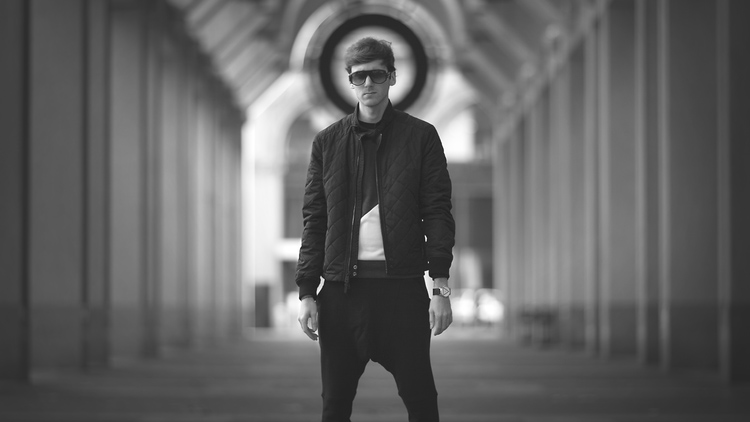
Let's go to Werk
Canadian producer OVERWERK (AKA Edmond Huszar) released his debut EP in 2011 and has become a distinct voice on the electro scene, marrying electronic sounds to orchestral ones. He's also become an expert in licensing, with his music being used by the likes of Gucci, Prada, Vogue, Lamborghini, GoPro, EA, Fox and Fortune.
He's just released Canon, his latest EP, and took time out of his busy schedule to show you the hardware and software he uses in his creative endeavours.
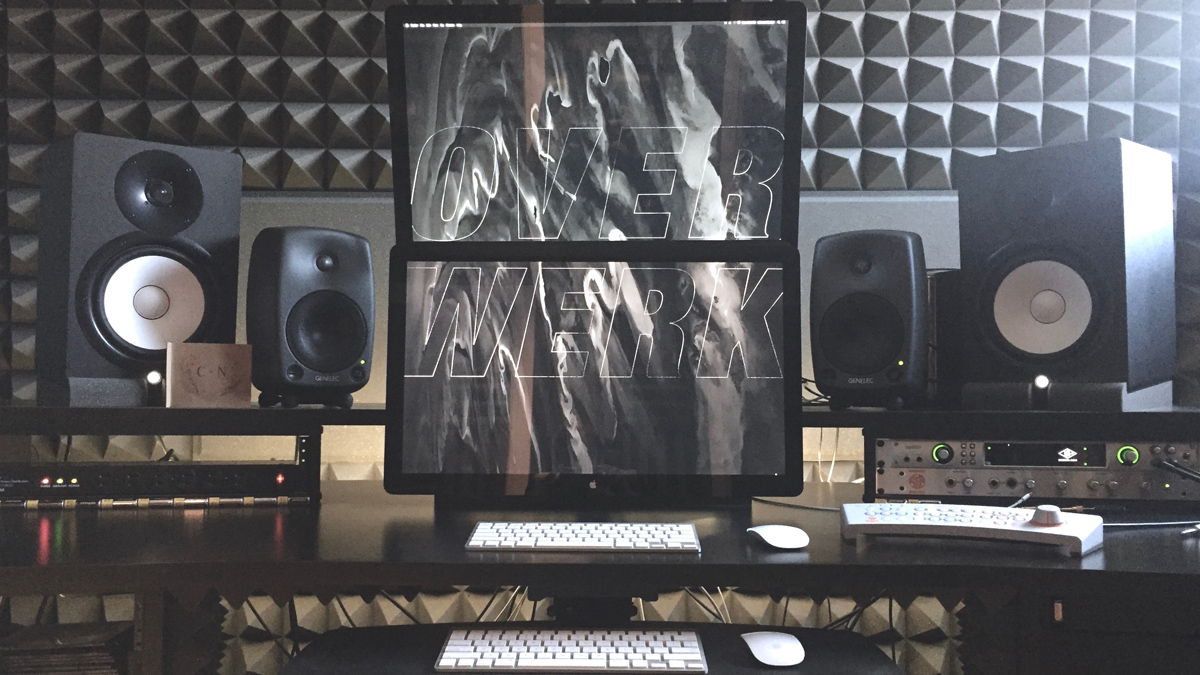
"The Bridge"
“This is my custom desk that I designed and built myself. I wasn’t able to find any pre-existing desk to accommodate my needs.
“The base/two supports on either side of the desk are Middle Atlantic RK racks with 16 Rack spaces. The desktop was cut from solid wood, eight feet wide and laminated. On top of that are two more RK racks with two rack spaces each. Affixed above those is another tabletop cut with less depth (16-inches) where I placed the monitors.
“For audio monitoring I use the Yamaha HS10s with matching HS10W sub. My secondary reference speakers are Genelec 8030s.
“All the electricals at this desk run through multiple circuits, but the essentials are plugged into a powerbar with backup battery for power outages.
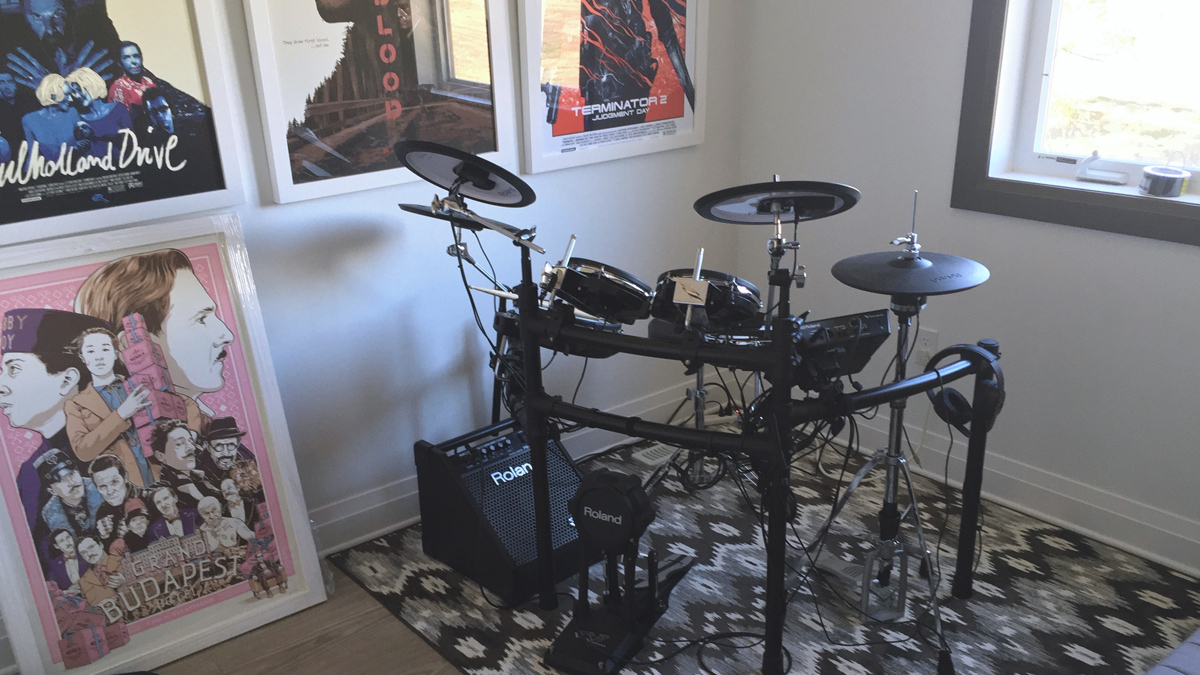
Jam room
“I have a separate room where I play the drums casually. This room is for jam sessions and clearing the mind.
“The kit is the Roland TD-25KV with matching V-Drum amp. I love these drums - they have a great feel to them.
“I’ve also been collecting some amazing movie poster prints from Grzegorz Domaradzki. - I have yet to put up that Grand Budapest Hotel poster I came across at a Wes Anderson themed art show in NYC.”
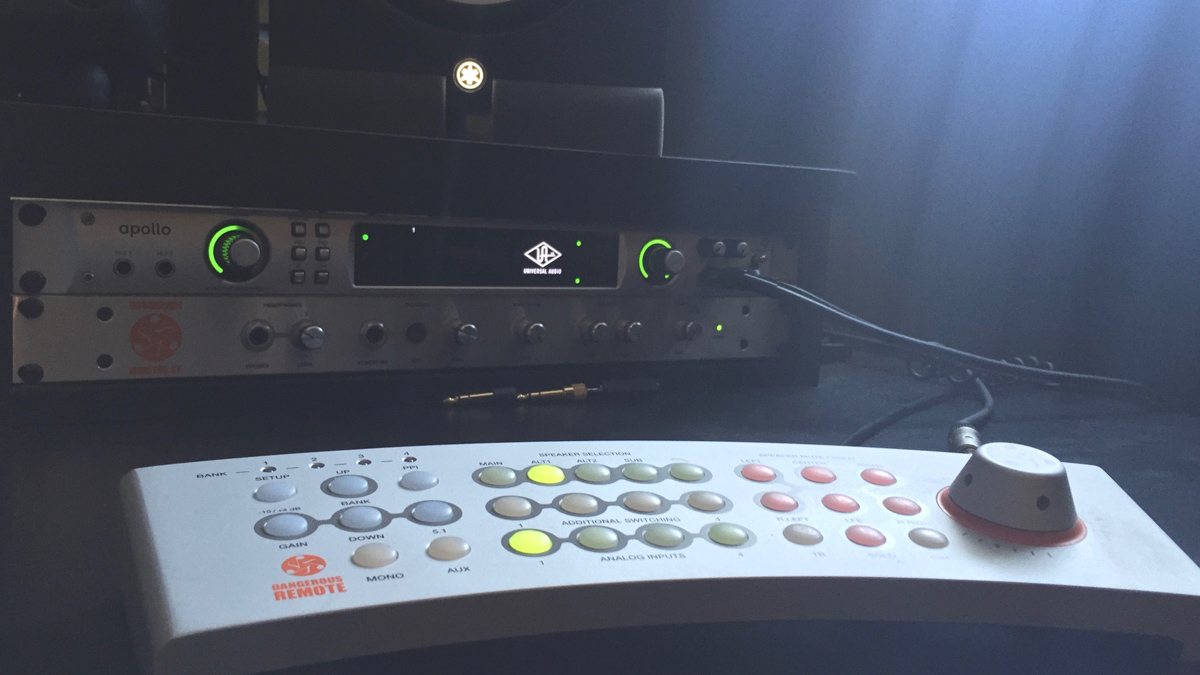
Interface
“For I/O, I use the Universal Audio Apollo with Thunderbolt. I looked into a lot of interfaces, and the Apollo had everything I needed. It has a healthy amount of inputs, multiple outputs for monitors, great audio quality and extremely low latency because of the Thunderbolt connection. Another bonus are the UAD powered plugins that come built in, but I barely use them.
“For monitor control I use the Dangerous Monitor ST. It pairs beautifully with the Apollo and allows for perfect control over all the monitors with a great-feeling volume knob. Most people in the industry love this product and I agree - I’m very happy with it.”
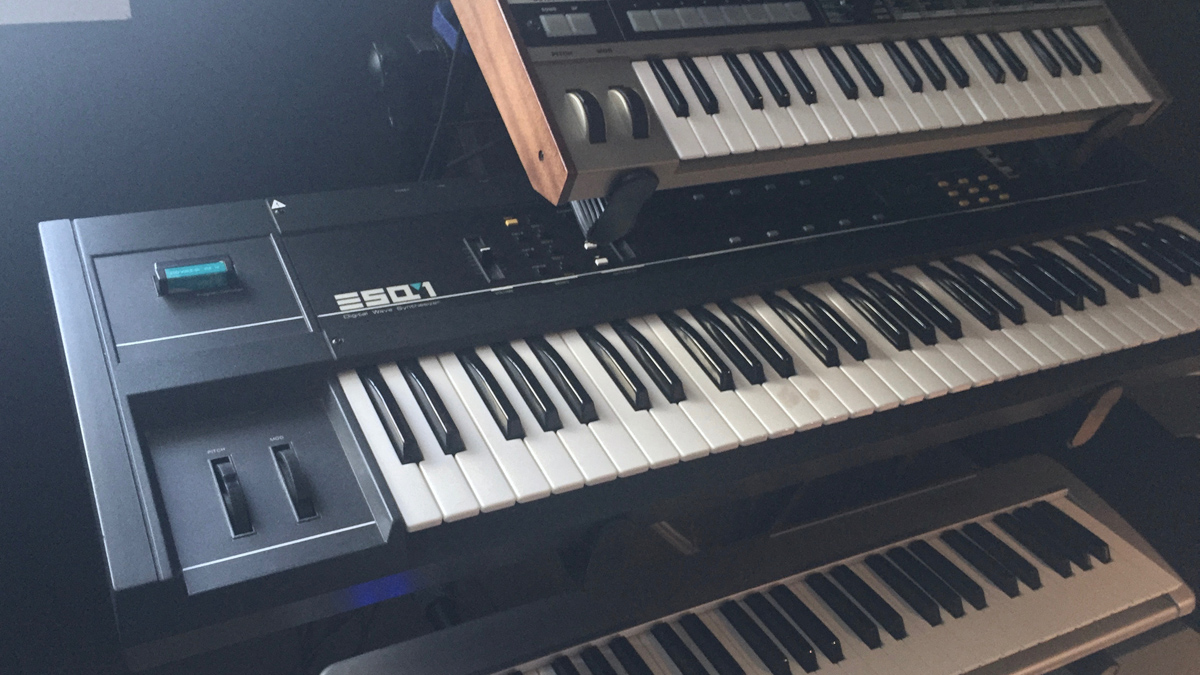
Keyboards
“As you can see I have three keyboards: Korg Microkorg, Ensoniq ESQ-1, and an M-Audio Keystation 49 MIDI Keyboard.
“The Microkorg I’ve owned for many years. It’s a staple with most producers since it’s a good entry-level synth with vocoder. Recently, I haven’t been using it so much, but I’m interested in incorporating some vocoder effects in future music.
“The ESQ-1 I purchased on eBay. I was looking for some trippy retro sounds and wanted to integrate some vibes that were a little less familiar. This synth has lots of character and it also came loaded with some random sound bank, so I’d be curious to find and try out more.
“The M-Audio MIDI keyboard is another staple for any producer. It’s the go-to when testing out sampled instruments or playing out a rhythm. I have no piano training, so I rely more heavily on manually-drawing MIDI.”
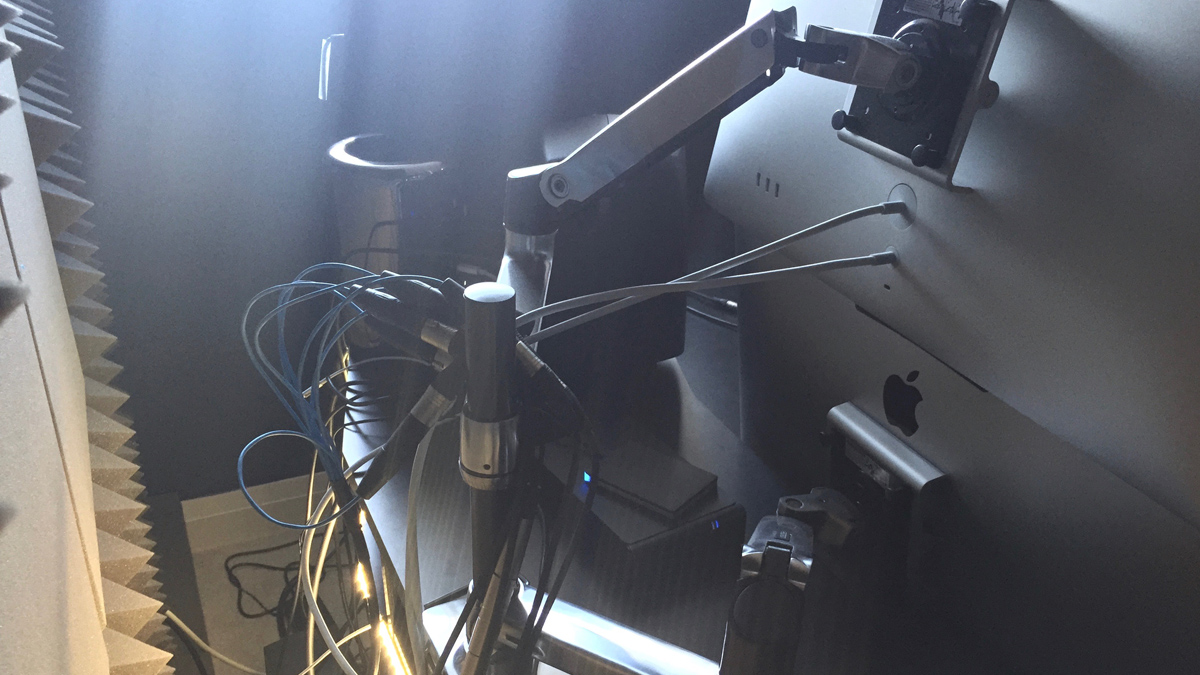
Displays/cables
“This is an important (behind the scenes) part that took some research and effort to set up. I’m working on two Mac Pros (latest generation and a G5). Each Mac has its own Cinema Display. When I placed them side by side, I realised that my desk, despite being 8 feet wide, wouldn’t fit both displays and monitors on it.
“I wanted to find the best possible solution to mount my displays vertically, which ended up being the Ergotron LX Dual Stacking Arm. The biggest issue was finding something that could support the weight of the Cinema displays.”
“In this image you can also see the D-Sub to 8XLR breakout cable. Many newbies may be confused about connecting multiple monitors and subs all into one audio interface. This cable is your solution. Now when you look at the back of an audio interface and see this 25-pin connector that looks like it belongs on a PC from 1995; it’s actually the output for all the monitor (speakers) you may require.”
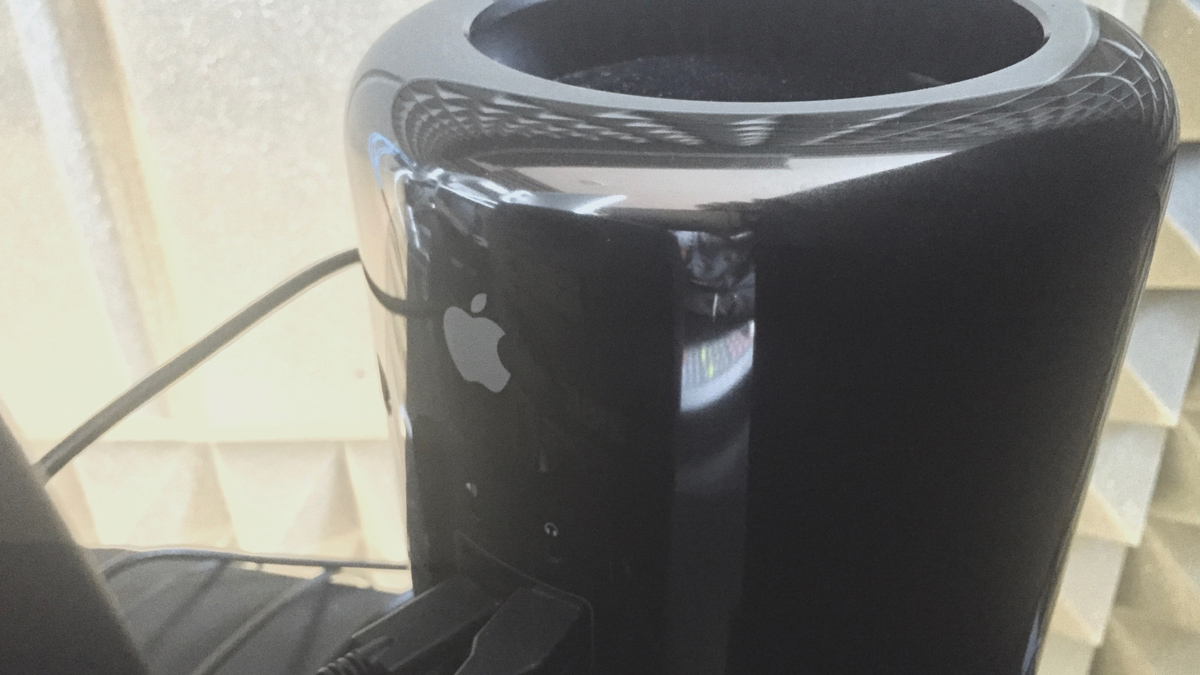
Mac Pro
“Here I have the new Mac Pro. I’ve been a Mac user my whole life starting with the very first. I’ve always loved the ecosystem, but as the OS has become more robust, so have the glitches. As Apple caters more and more to the masses, the creatives who form the foundation of their user base seem to be getting overlooked.
“I find Logic X to be less stable than 9, and some aspects are completely broken. Every OS update leads to more incompatibilities, so vets in the music industry know to never upgrade OS unless you have to. I made the mistake of upgrading to El Capitan (I clicked the prompt without thinking) and it basically broke every plugin and project file I had.
“The machine itself runs very well, the hardware is strong and it’s a product of beautiful engineering. I ordered it a year in advance of its release (which was continuously delayed).”
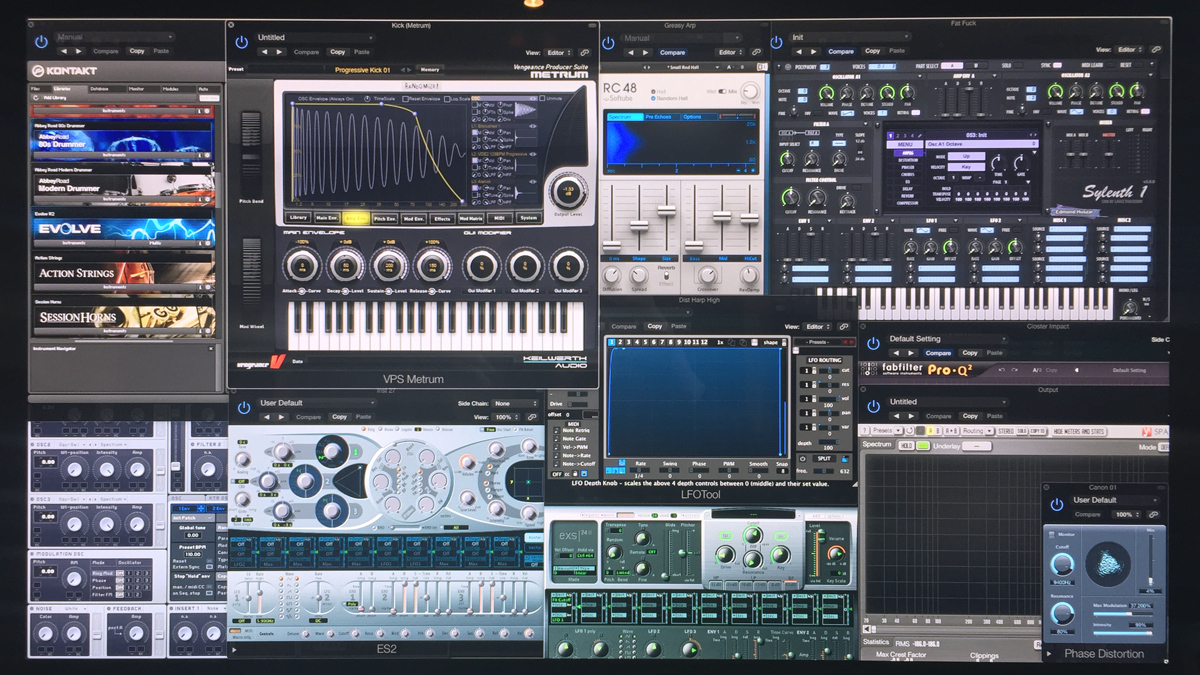
Plugins/software
“I rely most heavily on AU plugins and software synths. I have a technical mind so I spend a lot of time engineering sounds and crafting music with an outside-in perspective. I always start with a vision and carve it into existence, rather than flow more artistically as a songwriter or musician might.
“The software tools within Logic X that I most often use include: NI Komplete (the whole suite and samplers), NI Massive, VPS Metrum (To make kicks), Logic’s ES2, EXS24, Xfer plugins (like LFO Tool), Sylenth1, FabFilter Pro Suite, EW/QL Symphonic Samples, Voxengo SPAN, iZotope Ozone (Just for analysis, not for actual processing).
“I use a lot of Logic’s built in synths/effects. Tools can help you make small strides, but any big leap is through technique. I don’t often share the tools I use to produce because I honestly feel it doesn’t matter.
“A master painter can use the finest brush, or just paint with his fingers; in the end he’ll always make a masterpiece because of his technique and vision. I think there is too much focus on the tools in this world of electronic music.”
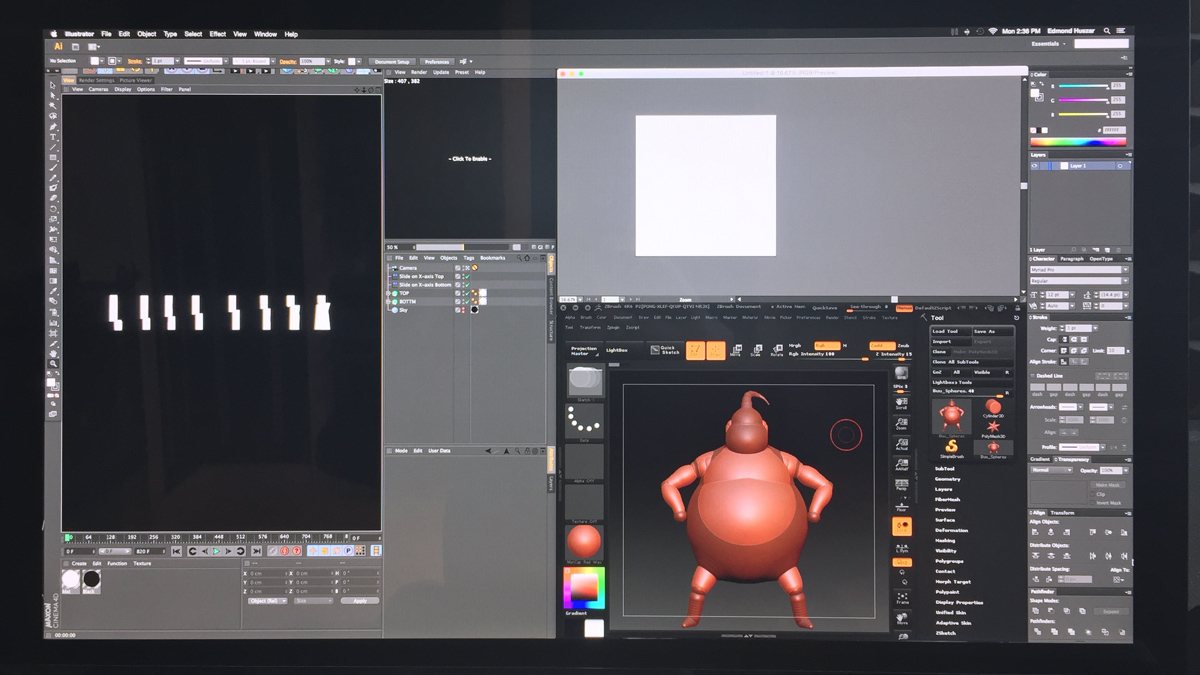
Design software
“Half my time in the studio is spent on design. It’s a big part of my life - bigger than music, actually. It’s something a lot of my music fans are not aware of, but I do all my own visual content. All album artwork, logo designs, 3D graphics etc.
“The software tools I use for design include: Adobe Creative Suite (Illustrator, Photoshop and Premiere mostly), Cinema 4D (For 3D design/animation ) and Zbrush for character modelling.
“To take a break from music work, I move on to design work. This gives my ears a chance to rest and I can still learn/experiment while pushing my creativity.”
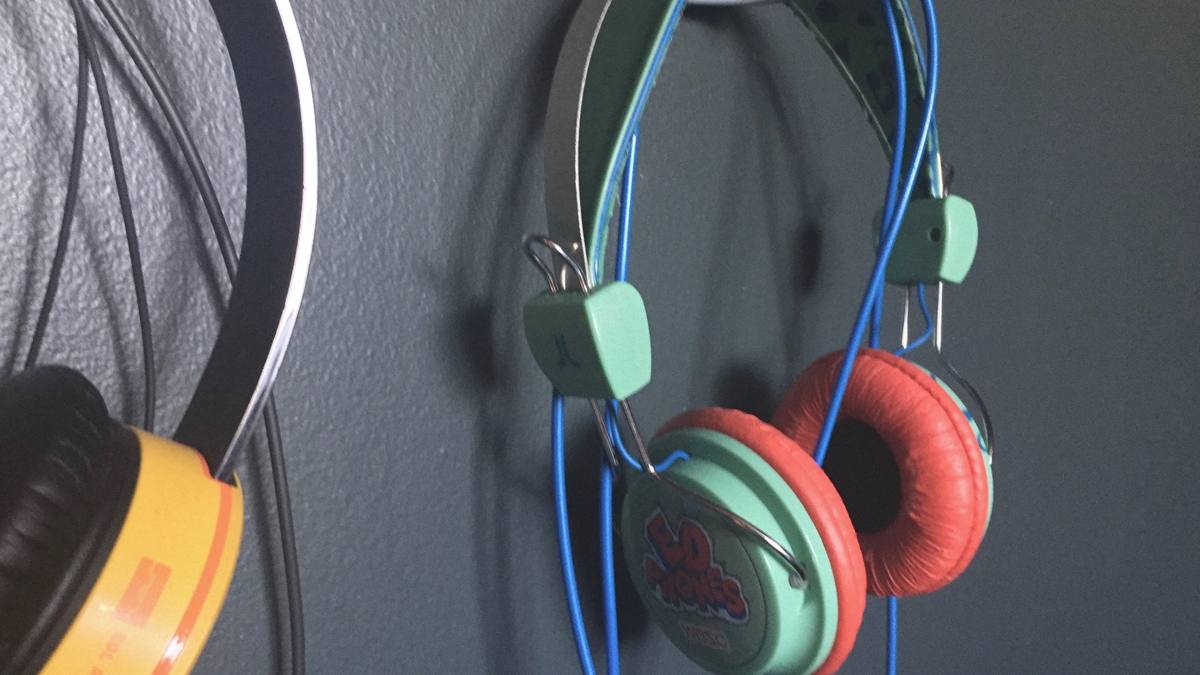
Headphones
“I have a pretty extensive headphone collection (or had). A lot of my headphones have gone to friends who always end up needing a new pair for odd reasons. But otherwise, I try to use more common brands of headphones like Sony/Sol to reference my mixes. I want to hear how fans may listen in conventional non-studio settings. Every speaker or headphone colours the sound, and it’s important to reference your mixes using multiple devices.”
“You can see here I have a pair of WESC “Ed Phones”. These limited edition headphones are a collaboration between Ed Banger Records and WESC from 2009, the pinnacle time for French Electro. These headphones were perfect for me considering my name is Edmond - Ed for short.”
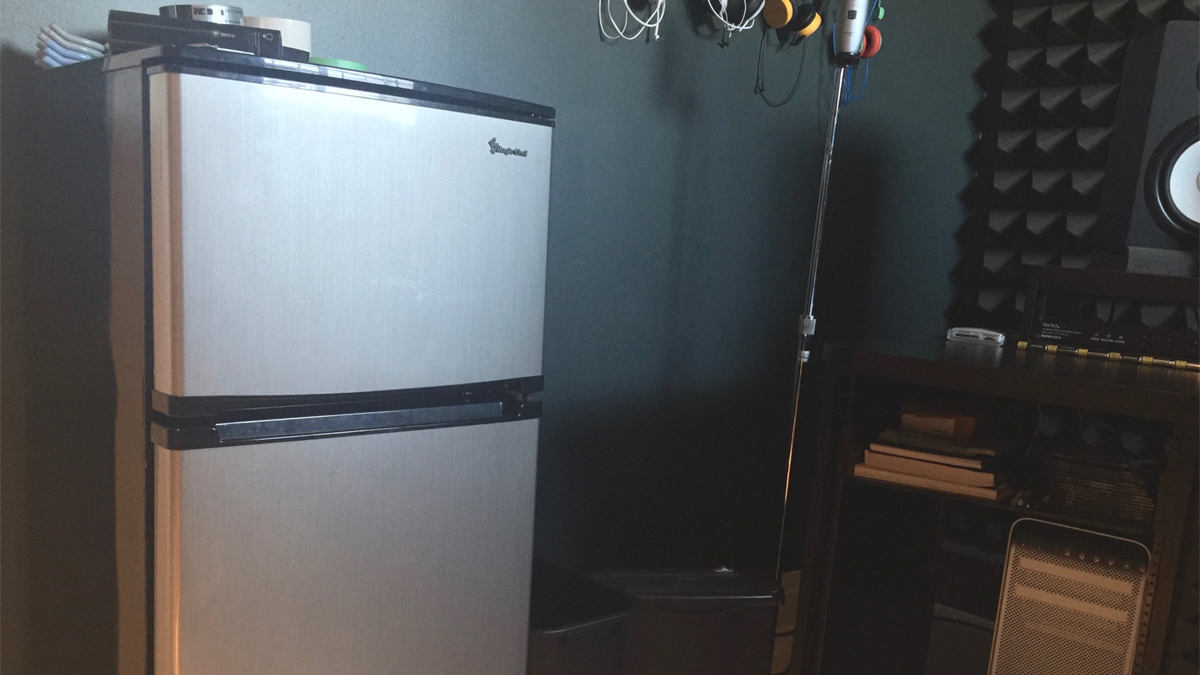
Fridge
“An important part of my workflow is deep focus. When I start working on a track I have a difficult time with interruption. If I have an idea I like to work on it until fruition, which is why, to the left of my desk, I have this refrigerator.
“This is where I store my Soylent. Other than Soylent I usually have some Coke & Nestea stocked up (my two favourite beverages). This fridge doesn’t contain much other than that - sometimes some leftover pizza or frozen yogurt. Regardless, it’s an essential part of my studio.”

I’m the Deputy Editor of MusicRadar, having worked on the site since its launch in 2007. I previously spent eight years working on our sister magazine, Computer Music. I’ve been playing the piano, gigging in bands and failing to finish tracks at home for more than 30 years, 24 of which I’ve also spent writing about music and the ever-changing technology used to make it.









